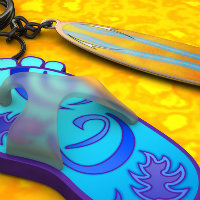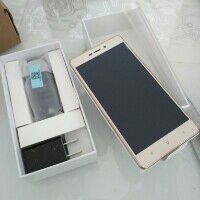Q
how to replace car key battery toyota yaris
Changing the battery in your Toyota Yaris key fob is actually a pretty straightforward process. First things first, you need to figure out your key fob's battery type. Yaris models from different years might use different batteries, but the CR2032 coin cell is the most common one. You can grab one easily at a convenience store or auto parts shop.
To do the swap, take a small screwdriver or even a coin and gently pry open the seam on the back of the key fob. Carefully separate the two halves of the case. Take out the old battery, but make sure you note which way the positive (+) and negative (-) sides were facing. Pop in the new battery, making sure it's facing the right direction, then snap the case back together. Give the key a test to make sure everything works—lock, unlock, maybe the trunk release if you have it.
For our friends in Malaysia, that humid weather can take a toll on battery life, so it's a good idea to check and replace it every 1-2 years as a preventive measure. If the key still doesn't work after swapping the battery, it might be an issue with the key's internal circuitry. In that case, your best bet is to head to an authorized Toyota service center—they've got the proper factory tools and expertise to diagnose it properly.
Also, try to avoid dropping the key or getting it wet; both can shorten the battery life. And if you've got one of the newer Yaris models with a smart key system, those might have slightly more involved reset procedures if needed. When in doubt, the owner's manual is your friend, or just ask a professional at the dealership.
Special Disclaimer: This content is published by users and does not represent the views or position of PCauto.
Related Q&A
Q
How to change time on car dashboard Toyota Yaris 2019?
To adjust the clock on the 2019 Toyota Yaris dashboard, first, power up the vehicle. Then, locate the "DISP" or "SET" button on the instrument cluster and press and hold it for about 2 seconds until the time display starts flashing. Next, use the "+" or "-" buttons on the steering wheel to adjust the hour and minute. Once you've set the correct time, press the "DISP" or "SET" button again to confirm.
It's worth noting that some trim levels might require navigating through the "Settings" menu on the infotainment screen and selecting "Clock Adjustment" instead. The exact steps can vary slightly depending on the specific configuration. Also, while many modern cars sync time automatically via GPS or smartphone connectivity, base model Yaris still need manual adjustment.
I recommend checking the time accuracy regularly, especially after crossing time zones or if daylight saving time changes were to apply in Malaysia (though Malaysia doesn't currently observe DST). This ensures functions like the dashcam and maintenance reminders have accurate time data. If you run into any trouble, the owner's manual or your local Toyota dealership service center can provide expert guidance.
Q
How to use cruise control on a Toyota Yaris 2019?
Using the cruise control on the 2019 Toyota Yaris is pretty straightforward. First off, make sure you're going at least 40 km/h. Then, look to the right side of your steering wheel—you'll see a lever labeled "CRUISE". Flip that lever up to the "ON" position, and you'll notice a white cruise control indicator light pop up on the dashboard. Once you're up to the speed you want to maintain, push the lever down to the "SET-" position to activate it; that's when the light turns green. Need to tweak your speed? Just hit the "+" or "-" buttons on the lever—each tap adjusts your speed by about 1.6 km/h. To temporarily disengage, a quick tap of the brake pedal or a nudge up on the lever does the trick. To fully turn it off, push the lever all the way back to "OFF".
A heads-up: on steep hills, the system might struggle to hold your set speed—totally normal. It’ll automatically adjust the throttle, but remember, there’s no auto-brake feature here. Also, be extra cautious using it in the rain or on slippery roads. Malaysian roads can be pretty unpredictable, so always stay focused and ready to take back control. This system works best on smooth highways, taking some of the edge off long drives, but it’s no replacement for your own good judgment and driving skills.
Q
How to connect phone to Toyota Yaris 2019?
To connect your phone to a 2019 Toyota Yaris, first make sure the vehicle's infotainment system is powered on. Then you can connect using either a USB cable or Bluetooth. For Bluetooth pairing: head into your phone's settings, switch on Bluetooth, then on the car's display select "Bluetooth Devices." Enter the PIN code shown on screen, and you should be connected. If you're using a USB cable, just plug your phone in—the system usually recognizes it automatically and prompts you to choose a connection mode, like Apple CarPlay or Android Auto.
Malaysian users, keep in mind that local trim levels might have different feature availability. Some versions might require enabling data roaming or downloading specific apps. Once connected, you can control music and calls using the steering wheel buttons or voice commands, which is great for keeping your focus on the road.
If you run into connection issues, try restarting both the car's system and your phone, and double-check that both have the latest software updates. The Yaris's connectivity setup is pretty straightforward for everyday use, but there can be slight variations between regional models. For the most accurate steps, it's always a good idea to check the owner's manual or swing by your local Toyota dealer.
Q
Is the 2019 Toyota Yaris good?
The 2019 Toyota Yaris is a solid pick if you're after an affordable small car, especially here in Malaysia. It's got a strong following among families and young drivers alike, thanks to Toyota's reputation for reliability and those wallet-friendly maintenance costs. Under the hood, the 2019 Yaris packs a 1.5-liter naturally aspirated engine that delivers smooth power and really impressive fuel efficiency – perfect for zipping around the city.
Inside, the cabin is all about keeping things simple and functional. You get the essential safety kit like ABS, EBD, and multiple airbags, which is a big plus. Step up to some of the higher trims, and you might even score nice extras like a reverse camera and a touchscreen infotainment system, making your daily drives that much more convenient.
Another big win for the Yaris in Malaysia is Toyota's extensive after-sales service network. Parts are easy to come by, and that helps keep long-term running costs down. If you're working with a tight budget but don't want to compromise on durability, the 2019 Yaris should definitely be on your shortlist. Oh, and let's not forget – Toyotas tend to hold their value really well in the used car market, so when it's time to sell, you'll likely get a decent chunk of your money back.
Of course, as with any used car, it's smart to check the service records thoroughly and take it for a good test drive to make sure everything's in tip-top shape before you sign on the dotted line.
Q
Does the 2019 Yaris have CarPlay?
Certain high-spec variants of the 2019 Toyota Yaris in the Malaysian market did come equipped with Apple CarPlay, but it's important to note that this wasn't a standard feature across all trims. It really depended on the specific specifications Toyota rolled out for Malaysia that year. If you're a 2019 Yaris owner there, your best bet is to check your original owner's manual or swing by your local Toyota dealership to confirm if your particular car has it.
CarPlay's a pretty handy bit of kit, right? It basically mirrors key iPhone functions onto your car's infotainment screen, letting you mess with navigation, pump tunes, or take calls without fumbling with your phone. Definitely makes driving a bit easier and safer.
Now, if your 2019 Yaris didn't get CarPlay from the factory, there might still be options. Some folks look into official upgrade programs or even reputable third-party retrofits. But here's the thing – if you're getting this done in Malaysia, make *absolutely sure* you go to a shop that's certified by JAKIM or JPJ. You don't want to end up with something that's not road-legal or, worse, voids your car's warranty.
In-car tech's come a long way lately, hasn't it? Beyond CarPlay, stuff like Android Auto is pretty much everywhere, and even local setups like Honda Connect or Proton Link are getting more popular. At the end of the day, it just comes down to what phone you're rocking and what features you actually need to pick the best system for you.
Q
What size engine is in the 2019 Toyota Yaris?
The 2019 Toyota Yaris hit the Malaysian market packing a 1.5-liter four-cylinder naturally aspirated engine, codenamed 2NR-FE. This powerplant features Dual VVT-i tech, cranking out 107 horsepower and a peak torque of 140 Nm. It's mated to either a CVT automatic or a 5-speed manual gearbox, with a clear focus on fuel efficiency and a smooth, easy drive—perfect for zipping around the city. What really stands out is how this engine holds up in Southeast Asia's tropical heat; it's reliable as clockwork and won't burn a hole in your pocket when it comes to maintenance, which is why it's such a hit with Malaysian buyers.
Beyond the engine, the 2019 Yaris also comes with VSC (Vehicle Stability Control) and HAC (Hill-start Assist Control). Trust me, these aren't just fancy acronyms—they're total lifesavers on Malaysia's rain-slicked roads. If you're shopping for a small car, there are other solid options in the segment, each with its own perks. But the Yaris? It's got that Toyota reputation for dependability and strong resale value, which is why it stays pretty popular in Malaysia's used car scene.
Q
Is the 2019 Toyota Yaris a good car to buy?
The 2019 Toyota Yaris is a solid pick for budget-conscious Malaysian drivers after an affordable runabout. It's built a reputation for being super reliable and easy on fuel – perfect for zipping around the city and daily errands. Under the hood, the 1.5L naturally aspirated engine delivers smooth, predictable power, and when paired with the CVT transmission, it really helps keep those fuel costs in check. On top of that, Toyota's after-sales network in Malaysia is pretty well-established, so maintenance and repairs won't break the bank.
Inside, it's not the most spacious cabin out there, but it's definitely roomy enough for small families. The interior is straightforward and user-friendly – no fancy frills, just practicality. Safety-wise, you get the essentials as standard: ABS, EBD, and multiple airbags, which should give you peace of mind for everyday driving.
If your budget is tight and durability is a top priority, the 2019 Yaris makes a lot of sense. When shopping for a used one, though, do yourself a favor and check the service records and mileage carefully to make sure there are no major accidents or mechanical issues. It's also worth cross-shopping with rivals like the Honda Jazz or Nissan Almera to see which one best fits your needs and personal taste.
Q
What is the 20th anniversary of the Toyota Yaris 2019?
2019 marked the 20th anniversary of the Toyota Yaris – known as the Toyota Vios here in Malaysia. Since it first rolled onto the scene back in 1999, this little car has become a global bestseller in the compact segment, and it's easy to see why: it's affordable, practical, and built like a tank. To celebrate this milestone, Toyota Malaysia rolled out a special edition for 2019. You know the drill with these anniversary models – they usually get some unique exterior bits, spruced-up interiors, and maybe a commemorative badge or two. Think sportier front and rear bumpers, exclusive wheel designs, special paint options – that sort of thing. Inside, there might be upgrades to the infotainment system, and let's not forget safety – maybe even Toyota Safety Sense, their active safety tech suite.
For Malaysian buyers, the Yaris/Vios has always been a top pick. It handles our local roads like a champ, and keeping it maintained doesn't break the bank. The 20th Anniversary Edition just cranked up the value proposition even more. Something to note about Toyota in Southeast Asia – they really tailor their cars to local tastes and needs. Whether it's beefing up the air conditioning for our hot climate or tweaking the suspension to handle our roads better, those little adjustments go a long way in keeping the Yaris/Vios a fan favorite here. If you're itching to know the exact specs on that 2019 special edition, your best bet is to hit up Toyota Malaysia's official website or swing by an authorized dealer – they'll have the full lowdown.
Q
How much is my 2019 Toyota Yaris worth?
Based on Malaysia's used car market trends, the current valuation for a 2019 Toyota Yaris typically ranges from RM55,000 to RM75,000. The specific price hinges on factors like overall condition, mileage, trim level, and service history. The higher-spec 1.5G variant usually commands around RM10,000 more than the base model, while every additional 10,000km on the odometer can knock off roughly RM3,000 to RM5,000 from the value.
I’d recommend checking recent transaction prices on local platforms like Carlist or Mudah for real-world benchmarks. A complete service record and remaining factory warranty can actually boost the value by 5% to 10%—definitely worth highlighting. It’s no secret the Yaris holds strong in Malaysia thanks to its reputation for reliability and fuel efficiency, so resale demand stays pretty solid. If you’ve added genuine Toyota accessories like a premium audio system or body kit, don’t hesitate to price accordingly—those extras hold value with buyers.
One thing to note: the post-2020 sales tax exemptions pushed new car prices down, which has put some downward pressure on 2019 used models. If you’re looking to sell, acting sooner rather than later could help you avoid further depreciation hits.
Q
What is a 2019 Yaris worth?
The 2019 Toyota Yaris is fetching around RM45,000 to RM65,000 in Malaysia's used car market these days. Of course, the exact price depends on stuff like condition, mileage, trim level, and service history. The 1.5-liter G and E variants are the most common ones you'll find locally, and they come with decent safety kit like VSC stability control and seven airbags. All in all, it holds its value pretty well for a B-segment hatchback.
It's worth noting that its Japanese rivals from the same year, like the Honda Jazz or Mazda 2, are in a similar price bracket. If you're looking to buy, I'd definitely recommend getting a PUSPAKOM inspection to check the car's condition and comparing warranty terms from different sellers.
The 2019 Yaris uses the 1NR-FE engine, which is known for being tough and reliable, but don't skip regular CVT transmission fluid changes – that's key to keeping the mechanicals happy. If you're planning to keep the car long-term, go for one with a complete service record. Also, with Malaysia's hot and humid weather, pay extra attention to the air-con system and rubber parts. These little details can make a big difference to both the car's actual value and how enjoyable it is to drive.
Latest Q&A
Q
What is the warranty on Swift 2024 engine?
The 2024 Swift's engine warranty is typically 5 years or 150,000 kilometers, whichever comes first. This is Suzuki Malaysia's official standard warranty policy, though specific terms might vary slightly with dealer promotions, so it's best to check with authorized dealers for the latest details before buying. It's important to note that the warranty usually covers manufacturing defects in the engine, but damage caused by improper maintenance as per the manual, use of non-genuine parts, or human error isn't included. Malaysia has a tropical climate, with high temperatures and humidity placing higher demands on engine durability. Owners are advised to strictly follow the maintenance schedule for oil and coolant changes, and regularly inspect the condition of belts and hoses. Additionally, Suzuki's warranty policy generally includes 24-hour roadside assistance, which is especially useful for long-distance drivers in Peninsular Malaysia and East Malaysia. While understanding the warranty details, owners should also keep complete maintenance records, as this can effectively boost the vehicle's residual value during future used car transactions.
Q
Is Swift 2024 worth buying?
The 2024 Suzuki Swift is a compact hatchback worth considering in the Malaysian market, especially for city commuters and budget-conscious buyers. It carries forward the Swift lineup's reputation for affordability and practicality, powered by a 1.2L naturally aspirated engine that delivers impressive fuel efficiency – official figures peg the combined consumption at around 4.5L/100km, which is pretty wallet-friendly given Malaysia's fuel prices. The interior is straightforward but well-equipped, with a standard 7-inch touchscreen supporting Apple CarPlay and Android Auto, hitting the mark for younger users. On the safety front, it comes with 6 airbags, ESP, and hill-start assist as standard, keeping pace with mainstream offerings in its class. That said, rear legroom is a bit tight, making it better suited for small families or singles. Compared to the Perodua Myvi, the Swift edges ahead in handling agility and brand reputation, though the Myvi might be the go-to for those on an extremely tight budget thanks to its easier maintenance and cheaper parts. If you're after driving fun and fuel economy, the 2024 Swift is a solid pick – but do yourself a favor: head to a dealership for a test drive to check if the space works for you, and shop around different dealers too. The Malaysian market often has promotions like free servicing or low-interest loans up for grabs.
Q
What is the maintenance cost of Swift 2024?
The 2024 Suzuki Swift has relatively affordable maintenance costs in Malaysia. A regular service (like oil and filter changes) runs around RM200 to RM300 per visit, depending on the oil type used (mineral, semi-synthetic, or fully synthetic) and the authorized service center's pricing. Servicing is required every 10,000 km or 6 months, whichever comes first. For major services (involving brake fluid, transmission oil replacement, etc.), costs can go up to RM500 to RM800. As an economical hatchback, the Swift benefits from ample parts supply and reasonable pricing, making long-term ownership costs low—ideal for budget-conscious buyers. Additionally, it's advisable for owners to stick to the factory maintenance schedule; not only does this extend the vehicle's lifespan, but it also preserves warranty coverage. Malaysia's hot and rainy climate means regular checks on the air-conditioning system and undercarriage rust protection are important too. These extra items might incur small additional costs, but they effectively prevent expensive repair bills down the line. Overall, the 2024 Swift is easy on the maintenance side, making it a great value-for-money choice for city commuting.
Q
Does the Swift 2024 have good resale value?
Based on the general performance of Malaysia's auto market, the 2024 Suzuki Swift is expected to hold its resale value well. This largely comes down to Suzuki's solid reputation locally, the Swift lineup's long-standing reliability, and strong market demand. The car is known for being fuel-efficient, nimble to drive, and having relatively affordable maintenance costs—all factors that positively impact its second-hand value. In Malaysia, small cars like the Swift are usually popular with urban commuters, so they tend to move quickly in the used car market, which helps keep prices stable. What's more, if the 2024 Swift maintains the durability and low fault rate of previous models, its resale value could outperform some rivals in the same class. To further boost its second-hand worth, it's a good idea to stick to regular servicing at authorized centers, keep complete records, and avoid heavy modifications—all of which directly affect the price assessment when it comes time to sell. When shopping for such high-resale-value models, Malaysian consumers can also check out annual residual value reports from local used car platforms or industry associations for more specific market data.
Q
What is the fuel consumption of Swift 2024?
The 2024 Suzuki Swift delivers impressive fuel economy in Malaysia. Powered by a 1.2-liter naturally aspirated engine paired with a lightweight body design, official figures put its combined fuel consumption at around 4.5 liters per 100 kilometers (actual numbers may vary slightly depending on driving habits and road conditions). It's perfect for city commutes or long drives, helping you keep fuel costs in check. The Swift has always been known for being economical and practical, and the 2024 model takes it up a notch with optimized engine combustion efficiency. There might even be a hybrid version available depending on market specifications, boosting its eco-friendly credentials further. When picking a car in Malaysia, besides fuel consumption, factors like regular maintenance costs and insurance premiums matter too. The Swift scores here with readily available parts and easy servicing, making it a great long-term value proposition. If you're after even better mileage, stick to smooth driving habits and keep up with regular maintenance—like changing the air filter and engine oil on time. Those little things can really help improve fuel efficiency.
View MoreRelated News

Toyota Yaris Interior Design Revealed: The Ideal Choice for Daily Commutes
AshleyJul 17, 2025

Highlights of the Toyota Yaris: The Perfect Fusion of Outstanding Power and Comfortable Handling
MichaelApr 16, 2025

Is my Yaris fuel consumption normal? What should the fuel consumption per 100km be?
MichaelFeb 28, 2025

Toyota takes the crown at the second stop of the 2025 WRC, the GR Yaris helps Toyota take the top of the points table
JamesFeb 19, 2025

Starting from RM 88,000! The favorite of office workers, Toyota Yaris meets all your needs!
LienSep 4, 2024
View More


















Pros
Cons